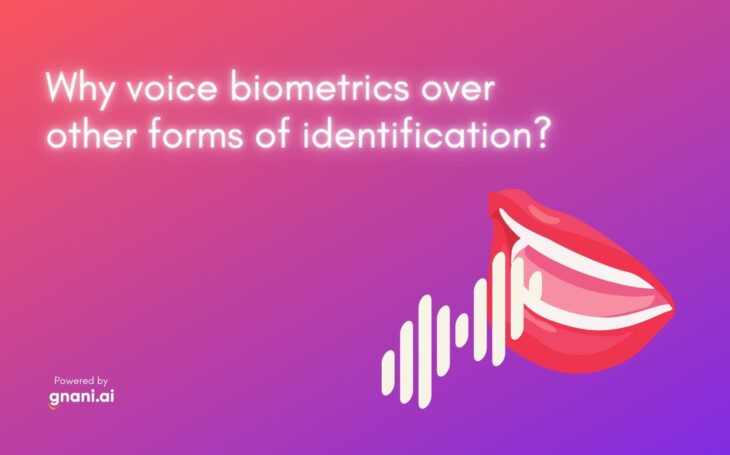
In recent years, there has been a significant increase in the use of biometric identification technologies. This can be seen in the rise of mobile fingerprint scanning and facial recognition software. While these forms of biometric identification are effective, they are not without their flaws. Voice recognition is a form of biometric identification that is quickly gaining popularity due to its accuracy and reliability.
Here are 5 reasons why voice recognition should be used over other forms of biometric identification:
- Accuracy: Voice recognition is one of the most accurate forms of biometric identification. It has an accuracy rate of up to 98%. This is significantly higher than the accuracy rates of other forms of biometric identification, such as fingerprint scanning (95%) and facial recognition (85%).
- Reliability: Voice recognition is also one of the most reliable forms of biometric identification. It has a false acceptance rate (FAR) of 0.00008% and a false rejection rate (FRR) of 2%. This means that out of every 1,000 attempts to identify someone using voice recognition, only eight will result in a false positive and two will result in a false negative. By comparison, fingerprint scanning has a FAR of 0.002% and facial recognition has a FAR of 0.01%.
- Speed: Voice recognition is also one of the fastest forms of biometric identification. It typically takes less than two seconds to identify someone using voice recognition software. This is significantly faster than the time it takes to identify someone using other forms of biometric identification, such as fingerprint scanning (typically five to ten seconds) and facial recognition (typically one to two minutes).
- Convenience: Voice recognition is also one of the most convenient forms of biometric identification. It does not require any special equipment or training to use. By comparison, fingerprint scanning requires special equipment (e.g., a fingerprint scanner) and facial recognition requires special software (e.g., face detection software).
- Privacy: Voice recognition is also one of the most privacy-friendly forms of biometric identification. It does not require any physical contact with the person being identified and it does not produce any image or recording that could be used for identity theft or fraud. By comparison, fingerprint scanning and facial recognition both require physical contact with the person being identified and both produce images or recordings that could be used for identity theft or fraud.
With some unique benefits to using voice benefits, companies are buying into it and making it a . Examples of companies using voice biometrics as their primary :
- Apple: Apple uses voice biometrics for its Siri virtual assistant. Users can train Siri to recognize their voice by saying certain phrases. Once Siri has been trained to recognize a user’s voice, it can be used to identify the user and provide them with personal information, such as their contacts, calendar, and email.
- Google: Google uses voice biometrics for its Google Now virtual assistant. Users can train Google Now to recognize their voices by saying certain phrases. Once Google Now has been trained to recognize a user’s voice, it can be used to identify the user and provide them with personal information, such as their contacts, calendar, and email.
- Microsoft: Microsoft uses voice biometrics for its Cortana virtual assistant. Users can train Cortana to recognize their voice by saying certain phrases. Once Cortana has been trained to recognize a user’s voice, it can be used to identify the user and provide them with personal information, such as their contacts, calendar, and email.
- Amazon: Amazon uses voice biometrics for its Alexa virtual assistant. Users can train Alexa to recognize their voice by saying certain phrases. Once Alexa has been trained to recognize a user’s voice, it can be used to identify the user and provide them with personal information, such as their contacts, calendar, and email.
- Samsung: Samsung uses voice biometrics for its Bixby virtual assistant. Users can train Bixby to recognize their voice by saying certain phrases. Once Bixby has been trained to recognize a user’s voice, it can be used to identify the user and provide them with personal information, such as their contacts, calendar, and email.
Voice recognition is a form of biometric identification that is accurate, reliable, fast, convenient, and privacy-friendly. These five reasons make it the superior choice over other forms of biometric identification, such as fingerprint scanning and facial recognition.
What do you think? Do you agree or disagree with the use of voice recognition over other forms of biometric identification? Let us know in the comments below!




